
Solid leadership since 1906
The University of Minnesota Crookston, University of Minnesota Technical Institute, and the Northwest School of Agriculture has been led by over the years by the following...
2017- Current Day: Mary Holz-Clause, Chancellor, University of Minnesota Crookston
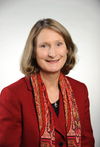
Mary Holz-Clause, Ph.D., has been named chancellor of University of Minnesota Crookston. Dr. Holz-Clause’s appointment is effective June 30, 2017, pending approval by the University of Minnesota Board of Regents.
She comes from California State Polytechnic (Cal Poly) University Pomona, where she has served since 2014 as dean of the Huntley College of Agriculture and as a tenured professor in the Department of Agricultural Business Management and Agriculture Science. Prior to her work at Cal Poly Pomona, she served as vice president for economic development at the University of Connecticut.
Accepting the chancellorship of the University of Minnesota Crookston marks a return to the Midwest for Holz-Clause, who has spent much of her life in Iowa—more specifically, at Iowa State University (ISU) in Ames. After earning her B.S. in Agriculture Business, a Master in Public Administration, and a Ph.D. in Agriculture Education and Extension there, Holz-Clause spent 25 years working at her alma mater.
2017: Barbara Keinath, Interim Chancellor, University of Minnesota Crookston
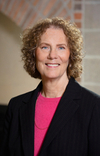
Keinath served as interim chancellor from January 1 through June 29-2017. She came to the U of M Crookston in 2013 as vice chancellor for academic and student affairs from Metro State University in the Twin Cities. She has extensive experience with continuous quality improvement, accreditation, and student affairs. Kienath holds a Ph.D. in educational administration with a focus on higher education and policy from the University of Minnesota. She earned a Master of Arts in college student personnel from Michigan State University, and a B.A. in German also from Michigan State. With the arrival of Chancellor Mary Holz-Clause in June 2017, Keinath will return to her roll as vice chancellor for academic and student affairs.
2012-2016: Fred E. Wood, Chancellor, University of Minnesota Crookston
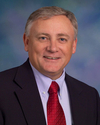
Wood arrived at the University of Minnesota Crookston in July of 2012 after a 26-year career at the University of California, Davis, where he had most recently served as vice chancellor of student affairs from 2007 to 2012 in addition to holding other leadership positions such as interim vice provost for undergraduate studies in addition to concurrently serving as a tenured chemistry faculty member there.
His first Minnesota tie came through his mother, Jean Turner, who was born in Crookston in 1917. Her parents, Earl and Ada (Cameron) Turner, were both born in St. Vincent, Minn., near the Canadian border, and were farmers. During the Great Depression when she was 12 years old, Jean moved with her family to Libby, Montana, where her family found work in the lumber mills. As the Depression gave way to World War II, Jean and her sister, Lucille, moved to California where they found work in the oil refineries. Jean met and married Jack Winfred Wood, who later became a carpenter, and while living and working in Martinez, California, their son Fred was born along with his two sisters.
Wood was known as a true student advocate. One of the personal highlights he mentioned before he left was the award given to him by the student body for Outstanding Service to Students at a 2015 awards ceremony. A hallmark of Wood’s administration had been a focus on students and unwavering support for them as chancellor. Wood acknowledged his pride in receiving the award.
One of the highlights of Wood’s career in Crookston was the construction and opening of a new wellness center on the campus. Wood’s advocacy locally and legislatively was instrumental in bringing the project to completion. The 36,000 sq. ft. facility includes a two-court gymnasium, suspended walking/running track, weight/cardio area, multipurpose room for group exercise, and a classroom. Funding was approved in the 2014 Minnesota Legislative Bonding Bill, which included a $10 million allocation, with an additional $5 million to be raised for the wellness center project through philanthropic efforts and/or from university funding sources, for a total of $15 million.
Under Wood’s leadership, the campus announced a $1 million gift to name the lobby of the new campus wellness facility from 1958 graduate Les Nielsen and his wife, June, and an additional anonymous gift for $1M for student scholarships; the Campus Advisory and Advancement Board was established to provide high priority programs and initiatives, actively support advancement, and enhance campus partnerships and service to the community, region and beyond; and in 2013, a strategic planning process was initiated. The campus also completed Heritage Hall, a new residence hall that opened during spring semester 2013 during Wood’s first year as chancellor.
During his tenure UMC added many new degree programs including exercise science and wellness, medical laboratory science, English, international business, entrepreneurship, finance, along with reestablishing a degree in agricultural education. When Wood arrived in 2012, there were 26 majors and 18 minors, and when he left, there were 34 majors, 22 minors, and the online programs had grown from 10 in 2012 to 14 in 2016.
2005-2012: Charles H. Casey, Chancellor, University of Minnesota Crookston
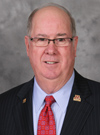
Charles H. Casey, D.V.M., has a distinguished career as a veterinarian and as an administrator with a strong rural background and an understanding of the challenges facing rural Minnesota. He earned his Doctor of Veterinary Medicine degree from the University of Minnesota. Prior to his appointment as chancellor, he served as dean and director of the University of Minnesota Extension Service.
Early in his career, Dr. Casey served as a captain in the U.S. Army Veterinary Corps in Fort Chaffee, Arkansas. Following his military service, he worked for 27 years as a practitioner in rural veterinary medicine and was a partner in the Dodge Veterinary Clinic in West Concord and Dodge Center, Minnesota. In 1992, he was named the director of Veterinary Outreach Programs in the University of Minnesota’s College of Veterinary Medicine, designing programs to connect the research and academic resources of the University with the needs of veterinarians, farmers, and businesses throughout Minnesota.
In 1968, he was elected to the West Concord Board of Education, a post he held until 1980. During that time, he served as chair, clerk, and treasurer. From 1979 to 1991, Dr. Casey was appointed to the University of Minnesota Board of Regents and from 1989-1991 served as chair. He was the vice chair of the North Central Extension Directors, as well as serving on the University of Minnesota Foundation Board, Hubert H. Humphrey Institute Advisory Board, and the North Central Regional Center for Rural Development Board.
Dr. Casey held leadership roles in many organizations including the Minnesota Veterinary Medical Association and the Organizational Audit Task Force for the American Veterinary Medical Association. Dr. Casey is a member of Phi Zeta Honor Society of Veterinary Medicine and Gamma Sigma Delta Honor Society of Agriculture. Among Dr. Casey’s awards are the Outstanding Achievement Award from the University of Minnesota, Director’s Distinguished Service Award from the Minnesota Extension Service, Torch & Shield Award from the University of Minnesota, Crookston, and he was named Minnesota Veterinarian of the Year in 1984. He was the recipient of the Honorary State Future Farmers of America Degree and the Friend of 4-H Award.
Dr. Casey began his appointment as chancellor at the University of Minnesota Crookston on September 12, 2005 and retired on July 2, 2012. Dr. Casey has three children, Shannon, Heather, and David and three grandchildren, Maggie, Griffin, and Reid. He and his wife, Barbara Muesing, enjoy traveling especially to see family. They have made frequent trips to Alaska where his son, daughter in-law, and their children live. Another favorite place to visit is Mexico, and they hope to travel to Australia and New Zealand in the future. They also plan to make a return visit to Ireland.
2004-2005: Joseph Massey, Chief Executive Officer, University of Minnesota Crookston
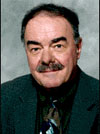
Josephy Massey, Ph.D., came to UMC in July 2004 as vice chancellor for academic affairs and was appointed chief executive officer in November 2004. He served in that capacity until September 2005. Along with Charles Muscoplat, Ph.D., Dean at the College of Agricultural, Food, & Environmental Science at the University of Minnesota , Massey chaired the strategic positioning task force that helped shape UMC in the mid-2000s.
2003-2004: Velmer S. Burton, Chancellor, University of Minnesota Crookston
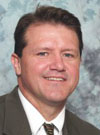
Velmer Burton served as chancellor from June 2003 through October 2004. During his tenure as chancellor, the Crookston campus developed proposals for several new programs that address emerging workforce needs of Minnesota (communication, computer software technology, health science degrees). UMC received approval from the Board of Regents of the University of Minnesota to offer new bachelor of science degrees in two areas: communication and computer software technology.
1985-2003: Donald Sargeant, Chancellor, University of Minnesota Crookston
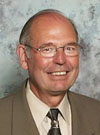
Donald Sargeant, Ph.D., began employment at UMC in 1970 as Chair of the Agriculture Division, then as Academic Dean from 1973 to 1985. The U of M Board of Regents appointed Sargeant as Chancellor in 1985. He served in that position until 2003 ending his UMC career as Director of International Programs in 2006. The campus continued to grow under Sargeant's leadership and transitioned from a two- to a four-year college with the offering of the first baccalaureate degrees in 1993-1994. Also, in 1993, UMC initiated a technology strategy which provided all students and faculty on campus with notebook computers, a first in higher education in the United States. Building projects during Sargeant's service as Chancellor included Bergland Laboratory, University Teaching and Outreach Center (UTOC) and surrounding support buildings, and the purchase of land on the north end of campus, Early Childhood Building, Owen Hall renovation, Production Horticulture Greenhouses, Westside Apartments (today called Centennial Hall), Peterson Gazebo, Kiehle Building renovation, and funding received for a new Student Center. He worked closely with the city and state agencies in securing funding to bring the Valley Technology Park and Agricultural Utilization Research Institute to the campus. For 35 of the first 40 years of UMC, Sargeant was actively involved with the students, faculty, and staff throughout the college.
1965-1985: Stanley D. Sahlstrom, Founding Provost, University of Minnesota Technical Institute at Crookston
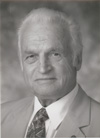
Stanley Sahlstrom, Ph.D., was the "founding father" of the University of Minnesota, Crookston. Sahlstrom graduated from the University of Minnesota with his bachelor's and master's degrees from the College of Food , Agricultural and Natural Resource Sciences in 1942 and 1953 respectively. He earned his doctorate in 1961 from the College of Education. Sahlstrom was charged in 1965 with the creation of the University of Minnesota Technical Institute, which opened its doors to students on September 21, 1966.
Sahlstrom's title was later changed from director of to provost. His vision, dedication, and ability to secure legislative and public support were key in securing funding for several buildings including Kiser Building, Dowell Hall, the Library, Owen Hall Addition, Lysaker Gymnasium and Sports Center, Conference Center (later named in Sahlstrom's honor), Skyberg Hall, Lee Hall, Brink Hall, and the outdoor athletic complex on the south end of campus. He presided in the ceremony involving the last graduating class of the Northwest School of Agriculture and the first graduating class of the Technical Institute in 1968. Sahlstrom led the transition of the campus from the Technical Institute to the Technical College to the University of Minnesota Crookston. Upon his election to the Board of Regents in March 1985, he resigned from the Provost position. He served as a Regent for 12 years.
For his leadership and support of the campus and the region, Sahlstrom was presented the Torch & Shield Award (1986), the highest honor bestowed by the University of Minnesota Crookston and the Northwest Research and Outreach Center. He was also inducted into the Golden Eagle Athletic Hall of Fame in 2001. He passed away in June of 2008.
Memories of Stanley D. Sahlstrom (1921 - 2008)
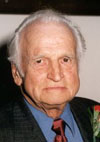
I am saddened to hear the news. I was a graduate from UMC in 1981 and my son will be starting at UMC this fall. Stanley was GREAT! I was so impressed that he could remember my name out of all the students and he could waltz great too. He and I would shake a leg at UMC events. Always smiling...
With fondest memories,
Belinda Snyder (Stone)
-----
Dr. Sahlstrom was a very fine man and contributed so much to the school and the community. I have many fond memories of him growing up in Crookston and attending UMC. He and my father were very good friends. He will be missed.
Mark Jurchen
Class of 1971
-----
I had an opportunity to meet and to know Dr. Sahlstrom when he first arrived at NWSA. He always made folks like me feel important, even for those few times I would run into him many years after graduating from high school. He was a #1 "Charmer" - and loved the U of M, Crookston. He always had season sports tickets in his pocket to hand out to alumni. What a guy!!
Like you, I feel a bit sad today upon hearing of his death.
Lloyd
Class of 1967
1956-1965: B.E. Youngquist, Superintendent, Northwest School of Agriculture
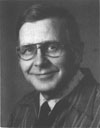
Bernard E. Youngquist became superintendent of the Northwest School of Agriculture and Experiment Station, Crookston in 1956. Under his direction, the station doubled in land resources, added staff and increased research. he was instrumental in gaining favorable approval for the phasing out of the high school-level school and for the beginning of a technical-collegiate school.
1937-1956: T.M. McCall, Superintendent, Northwest School of Agriculture
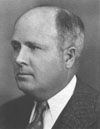
T.M. McCall had worked at the Northwest School of Agriculture as a horticulturist since 1911 and was experiment station field manager from 1919 to 1926. He became superintendent of the NWSA in 1937 and served in that capacity until his retirement in 1956. During his years as superintendent, enrollment grew to over 400 students annually, and the reputation of the school and experiment station continued to grow in stature.
1927-1937: Austin Dowell, Superintendent, Northwest School of Agriculture
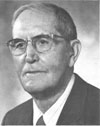
Austin Dowell was appointed superintendent in 1927 and stayed until 1937. Although he was school superintendent during the years of the Depression, school enrollment continued to climb. In spite of financial problems at the school during that period, Dowell insisted on high quality teaching, and he was rewarded by growing enrollment.
1910-1927: Conrad G. Selvig, Superintendent, Northwest School of Agriculture
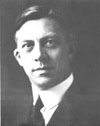
Conrad Selvig was appointed by the University Board of Regents to serve as school-station superintendent from 1910 through 1927. Selvig worked toward building the school, with developmental plans to allow for future needs.
1906-1910: William Robertson, Superintendent, Northwest School of Agriculture
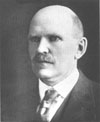
William Robertson was the first NWSA superintendent, he was with the station-school until his death in January 1910. He established the curriculum of academic and vocational training for the new school. He secured staff and faculty to implement the school's programs.